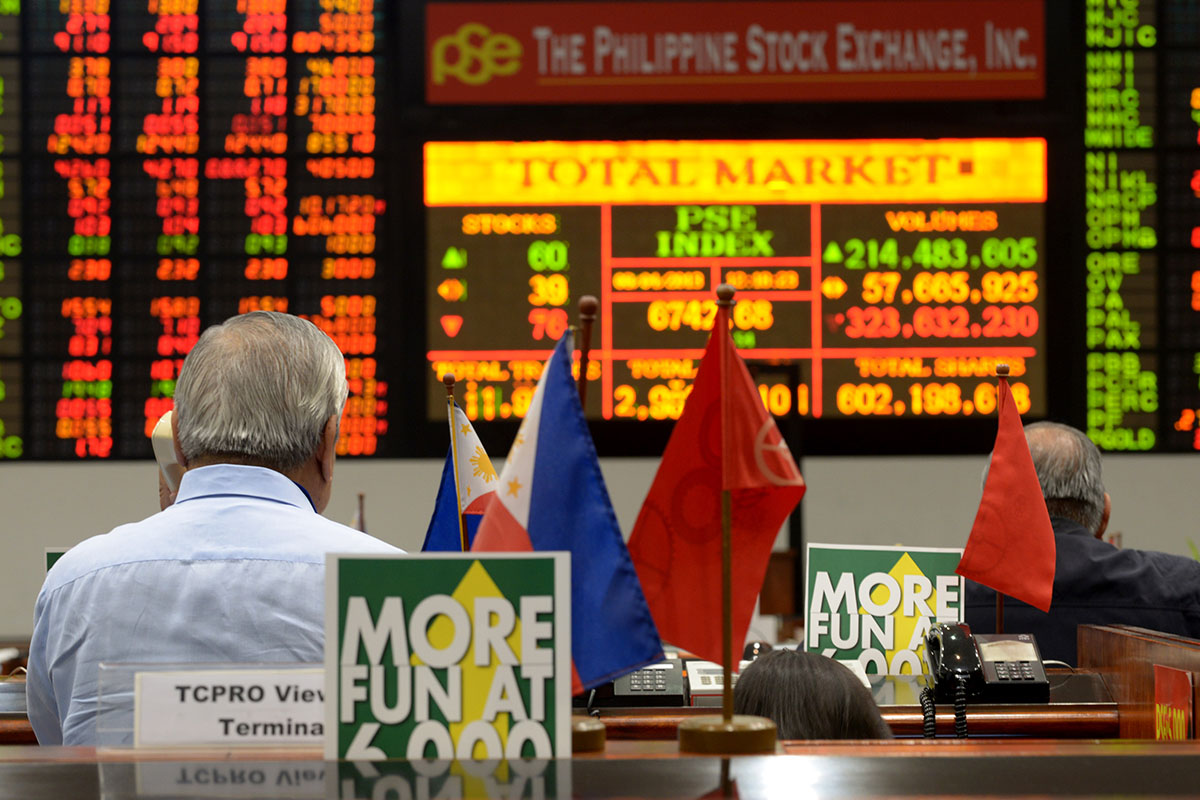Opposites attract. China's billions are already flowing into the Philippines via online gaming and infrastructure spending. Hot portfolio flows could be next.
Philippine Stock Exchange is in talks with its Shenzhen counterpart on a possible investment, CEO Ramon Monzon told Bloomberg News. The Southeast Asian exchange wants a Shenzhen-Manila connect, Monzon said, referring to the special trading links established between China's stock markets and Hong Kong.
The PSE is in the process of selling as many as 11.5 million new shares, or a 14 percent stake, to reduce local brokers' ownership. Under the local Securities Regulation Code, the Shenzhen Stock Exchange would be allowed to hold at most five percent of PSE's shares.
The exchange could do with the help. Foreign institutional investors have begun to return to the market only this year, with net purchases of one billion dollars, after an exodus in 2015 and a flat 2016. The benchmark index's 19 percent advance in US dollar terms lags a 32 percent rally in Hong Kong's Hang Seng Index.
Overseas commentators are quick to point the finger at President Rodrigo Duterte's fiery rhetoric, but the truth is that lack of trading is the big problem. The total value of stock transactions was equal to only 14.5 percent of the market's capitalisation in 2016, according to the World Bank, the least among countries in the Association of Southeast Asian Nations. The figure for China was 250 percent.
Meanwhile – and perhaps reflecting the lack of liquidity – the Philippine Stock Exchange Index is trading at a pricey 23 times earnings, further deterring foreign investors. The exchange operator's shares haven't benefited from the broad market's gains, being little changed this year.
As I wrote last week, listed companies in the Philippines are also boring. There have been few IPOs and the market is dominated by the richest families. Seven companies that belong to family-controlled groups make up more than half the market cap of the benchmark index and contributed more than 60 percent of the gauge's gain this year.
Shenzhen is the exact opposite. Traders there transact more than 200 billion yuan (30 billion dollars) every day, or annually more than double the market value of listed companies, the highest ratio among the world's major exchanges.
A Manila-Shenzhen connect could certainly help the Philippine exchange, though there have been no formal discussions on such an arrangement. Last year, about 36 billion dollars of stocks were traded on the PSE, or less than two days of trading in Shenzhen. If even a tiny fraction of that liquidity was allowed to flow to Manila, it could have a major impact.
Shenzhen trades equivalent of PSE annual turnover every two days.
It could also create some unexpected winners. In Hong Kong, Chinese investors' fondness for domestic carmakers and real estate companies has driven huge rallies this year in the shares of Geely Automobile Holdings, Guangzhou Automobile Group and Sunac China Holdings.
A trading pipe between Shenzhen and Manila would have selling points for both sides. Duterte has moved the Philippines closer to China diplomatically, cooperating on disputed areas in the South China Sea and attracting infrastructure investments that serve to advance President Xi Jinping's One Belt, One Road agenda.
Sparing a few drops from Shenzhen's vast liquidity tap could be a smart move for China, helping to draw a strategic southern neighbor into a tighter embrace. – Bloomberg
